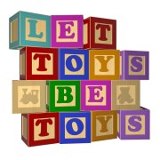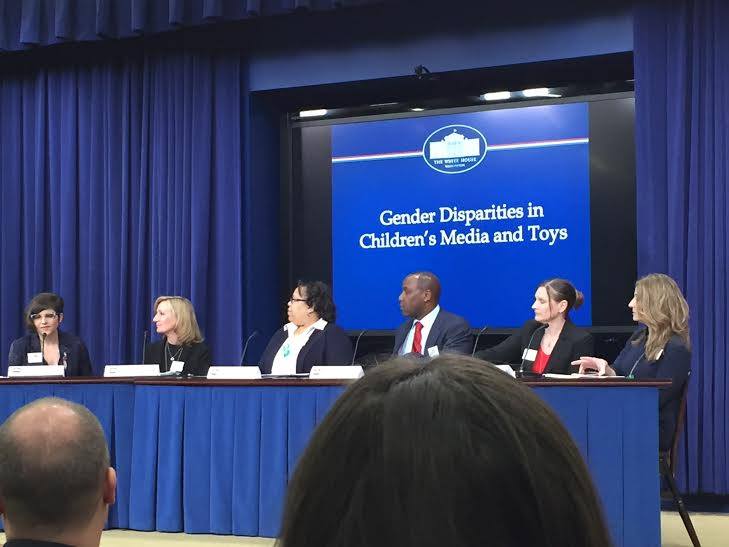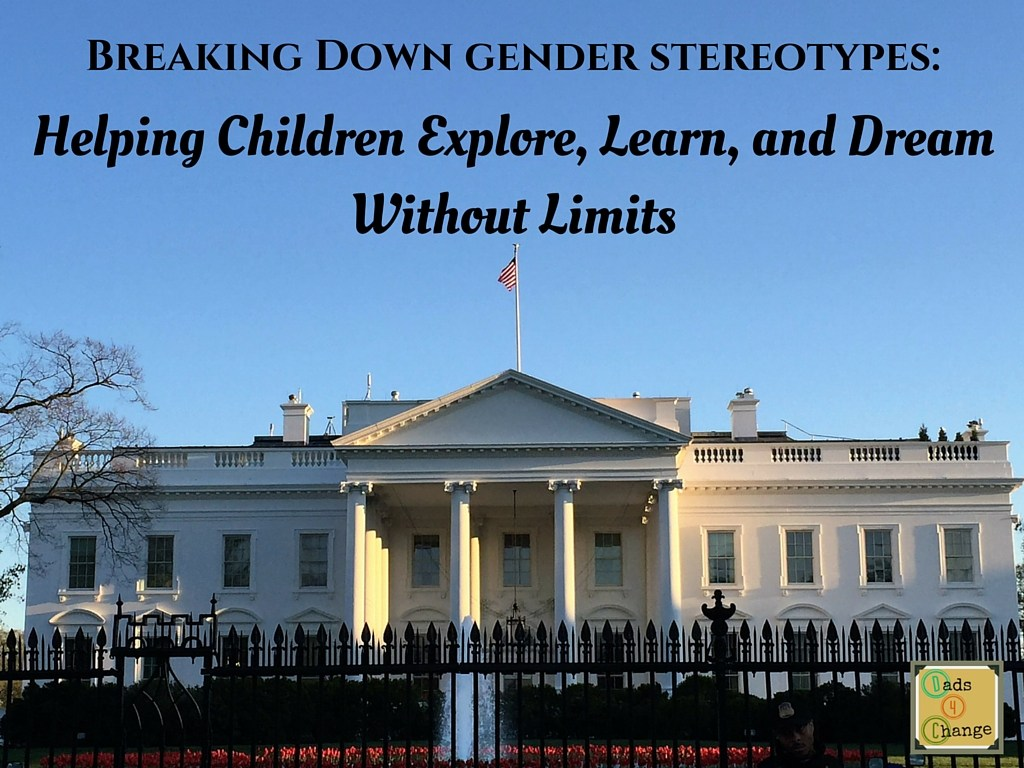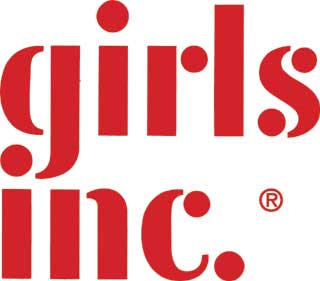April 28, 2016 The dismissive wails from the Twittersphere and social media mavens were almost audible:
“Oh please, not another pink and blue gender in the toy aisle post…”
To coin a phrase from Part One of the White House convening on Breaking Gender Stereotypes in Media and Toys, “Yes, And…”
I’ve been writing about media and marketing’s impact on kids for ten years now at Shaping Youth, so it shouldn’t have irked me that pals well-versed in this conversation were ready to move on just when the White House sanctioning of the topic gave it the traction and spotlight to merit a larger lens…but it did.
It’s as if some of my colleagues had mentally checked the box, “Yay! Finally solvable, they’re on it! Next!” before sticking around to see if research outcomes or industry promises for change had any teeth for sustainable change.
We’ve been down that path with school nutrition and the food industry before, so it’s imperative to stay tuned and “Occupy” mindshare as much as we’d like to hopscotch over to the finish line.
Today’s Part Two in the series of recaps and opinions on the April 6, 2016 White House event features sociologist, gender researcher, and panelist Dr. Elizabeth V. Sweet who knows this dynamic all too well.
In her research, Dr. Sweet has been unraveling the profound impact of this giant hairball on child development and cultural implications for quite awhile now, so it’s positive progress seeing the White House give gender stereotypes in media and toys a room full of ‘ears’ with concerned stakeholders across the children’s spectrum.
We have literally manufactured a problem…
Using an international human rights law framework, there are repercussions, and from the simplest observations in media, toys and gender stereotypes, there are upending ramifications.
Some of the reverb and fallout surfacing in this particular generation of stratified play?
Suppressing emotions, acting less smart, avoiding sports, dieting and body dysmorphia, are just a few of the blurbs cited in roundup articles like “8 Ways Gender Roles Actually Harm Our Kids” To get a better grip on why gender stereotypes matter and how they’re impacting our social fabric, economy, and even health and wellness from an early child development level, it’s important to start out on the same page.
As defined by the United Nations Human Rights Office of the High Commissioner:
“A gender stereotype is a generalized view or preconception about attributes or characteristics that are or ought to be possessed by, or the roles that are or should be performed by women and men. A gender stereotype is harmful when it limits women’s and men’s capacity to develop their personal abilities, pursue their professional careers and make choices about their lives and life plans.”
 Beyond needlessly quelling STEM career paths with narrowly defined behavioral cues that can limit vs expand brain plasticity and alter child development, there’s also the very specific damage of bullying and social emotional harm in terms of health risks for kids and the ASA, the UK’s advertising watchdog will be conducting further research on the impact of ads (especially on children).
Beyond needlessly quelling STEM career paths with narrowly defined behavioral cues that can limit vs expand brain plasticity and alter child development, there’s also the very specific damage of bullying and social emotional harm in terms of health risks for kids and the ASA, the UK’s advertising watchdog will be conducting further research on the impact of ads (especially on children).
On Friday I’ll be speaking to Rosalind Wiseman, specifically about the event’s coverage from a boyhood perspective, as she’s had plenty of research of her own navigating ‘boy culture’ recently with The Guys Guide and Masterminds & Wingmen.
The societal impact on boys with gender stereotypes is starting to catch the media eye too, as reflected in this Guardian post, “Why Teenage Boys Are Told Not to Feel” and of course the documentary film, The Mask You Live In. Further, this disturbing Washington Post article citing “damaged masculinity” as a potential trigger in mass shootings made me shudder.
From everyday sexism to long-lasting harm with assumptions, bias, and perceived limitations in developing identities, these various gender stereotypes have far reaching tentacles. So yes, it’s about time there was a productive ‘convening’…bravo!
Wait, toys and media did all that?
 Again, the conference conveners might say, “Yes, and…”
Again, the conference conveners might say, “Yes, and…”
Our gender pigeon-holing and profiling is cumulative, with an entire generation desperately in need of a ‘market correction.’
Few know this better than sociologist and renowned gender research expert Dr. Elizabeth V Sweet, (in red at left) whose article in The Atlantic, “Toys Are More Divided by Gender than They Were 50 Years Ago” sent shockwaves through the industry, through STEM studies and economics circles and even through public health arenas where people FINALLY began to snap open their eyes to broader implications on a globalized scale. Her historic lens in her dissertation research on gender marketing throughout the 20th century offers a lot of “aha” moments for those who want a “what’s changed, why does this matter” robust perspective.
Some schools have started to explore gender stereotypes with children early and mitigate some of the damage via lesson plans like Media Smarts (8-9) and Common Sense Media (6-8) and even instill critical thinking with activities as early as PreK.
But as a society, it’s frustrating to see prevention devalued in favor of a “mop up the mess” protocol, when issues that most of us warned at the ’ember’ level take years to ignite into flames, only when fanned by media attention AFTER the problem has impacted kids health.
Why Do We Have to Reach a Tipping Point to Pay Attention?
Public health question: Do we really need to wait until Time magazine gives “Porn and the Threat to Male Virility” a cover story to see the impact it also has on healthy sexuality and adolescent public health, much less Girls & Sex? Likewise, e-cigs have tripled in one year, marketed to youth in candy-flavors for adolescents aping vaping, now exceeding the use of regular cigarettes (thankfully on the decline) but does the public care? And we ALL know scads of data exist on the impact of Photoshopped perfection, objectification and sexualization fouling up kids’ self-concept and mental health yet even body image legislation can’t get traction for change when profit is placed over children’s health.
Until each of these topics reach critical mass or a ‘crisis’ point in public health, misogynistic misfires and gender stereotypes fail to command the headlines until the damage is done, even though it’s obvious they’ve been bubbling up in our media pervasive culture in surround sound.
This White House convening could FINALLY be the momentum signal that gender stereotypes, STEM gender bias, and the lack of diversity and under representation in STEM have the attention of Washington…of the economists, public health pros, and media itself.
 For someone like Dr. Elizabeth Sweet who has tenaciously planted her red flag atop a mountain of research like a toy Lego mini-fig with a clarion call for change, this White House convening must have been a very validating moment for her…Time to publicly call out the trickle down outcomes of gender stereotypes and play patterns loud and clear. Understand the storytelling of gender’s impact on choices, society, careers, humanity…
For someone like Dr. Elizabeth Sweet who has tenaciously planted her red flag atop a mountain of research like a toy Lego mini-fig with a clarion call for change, this White House convening must have been a very validating moment for her…Time to publicly call out the trickle down outcomes of gender stereotypes and play patterns loud and clear. Understand the storytelling of gender’s impact on choices, society, careers, humanity…
Elizabeth Sweet joins us today in an e-interview reporting out her take on the recent White House convening. For more, check out her coverage on the fabulous Let Toys Be Toys website too. Like many of the interviewees in our series, she conveys there’s been positive progress, but speaks from a uniquely qualified lens to judge what we’ll need to truly make these talking points stick.
In an era of global expansion and interdependence, the last thing we need is boxed in thinking, segregation of smart minds, and reductive narratives. We need all hands on deck to solve huge global resource problems …together.
In Conversation with Dr. Elizabeth V. Sweet
White House Panel: Gender Disparities in Media & Toys
Amy Jussel: Do you feel the media and marketing industry is starting to understand that they are ‘complicit’ in creating cues that can contribute to kids’ self-worth & societal contribution? What evidence did you find at the White House event for REAL change?
 Elizabeth Sweet, PhD: The White House conference did leave me hopeful that we are moving toward real change. The fact that industry was willing to come to the table and engage in this kind of conversation was an important signal that they recognize gender stereotyping has become a problem.
Elizabeth Sweet, PhD: The White House conference did leave me hopeful that we are moving toward real change. The fact that industry was willing to come to the table and engage in this kind of conversation was an important signal that they recognize gender stereotyping has become a problem.
In their remarks, White House representatives emphasized that toy and media executives care about this issue, in part because many have kids of their own.
While it was clear that they care about this issue, I didn’t get a clear sense from the industry representatives from the big companies (Mattel, Disney, Lego, and DC Entertainment) who presented at the conference that they truly understand the scope of the problem.
Each of them did talk about work they are doing to address gender stereotypes, but most of these solutions work within the existing and pervasive system of gender categorization. Companies are expanding the offerings within gender categories, but I did not hear much talk from them about setting aside those gender categories altogether. This is the solution that many of us are advocating for.
The presentations from scholars and advocates highlighted how diverse and complex children are – their interests and abilities aren’t well defined by categories and stereotypes. Thus I would like to see more companies move away from using gender categories as the basis of product research, design, and marketing.
 Amy’s note: For a sample of some of the outcomes see the White House fact sheet including actions by Discovery Communications, Family Fun, Netflix, Participant Media and more…
Amy’s note: For a sample of some of the outcomes see the White House fact sheet including actions by Discovery Communications, Family Fun, Netflix, Participant Media and more…
Also a reminder that next week Girls Inc will dedicate its 2016 Annual “Girls Inc. Week” (May 2-6) to media awareness and countering stereotypes that limit girls and women! Via the release:
Girls Inc. will create and distribute a toolkit to help its 82 affiliates (which reach 140,000 girls each year) do the following: (1) conduct, that week, a series of consciousness-raising media literacy activities with the tens of thousands of girls they serve; and (2) raise awareness in their communities through social media, op-eds and letters to the editor in local newspapers, and community-wide discussions. Girls Inc. also will host a live social media event with prominent women in the media who will share their experiences and thoughts on the portrayal of women and girls – the event will use hashtags such as #GirlsIncWeek and #GirlsInMedia.
Amy Jussel: I heard a lot about the academic panel where you spoke on gender disparities helping attendees see how industry is unnecessarily placing limitations on girls AND boys…Do you feel the research sunk in shifting from ‘awareness’ to ‘action?’
Elizabeth Sweet, PhD: The people in the audience that I spoke with seemed very compelled by the wealth of research presented in the panel discussions showing that gender stereotypes are a real issue in kids toys and media and that they have a host of problematic effects for both boys and girls. The consistent message from scholars that stereotypes limit children’s self-expression and aspirations seemed to hit home, and they were given tangible form by researchers and advocates who work directly with kids.
Amy Jussel: Name three ‘surprising’ outcomes that made your heart sing…
Elizabeth Sweet, PhD: The conference itself made my heart sing! To be in that room with so many influential people committed to change was amazing. Conference organizers Sarah Hurwitz and Jess Weiner did a phenomenal job of putting together a set of informative panels with rich presentations from a variety of perspectives.
I loved Little Bits, a new STEM/STEAM toy that has been purposefully designed to be gender neutral and to appeal broadly to children. The approach they are taking to design and marketing is exactly what I would like to see more of. I also loved seeing so many small startup toy companies like Wonder Crew, I Am Elemental action figures, and Go! Go! Sports Girls in the room. They really seemed to “get” the scope of the problem and were actively working on solutions.
Amy Jussel: Some of the ‘big brands’ launched initiatives with commitments to change…Chicken or the egg question…Do you feel change is coming because of consumer demand, items being proven to “sell” or will the tendency be to brand with ‘best sellers’ that still have a strong gendered message?
Elizabeth Sweet, PhD: Most of the changes I saw from big toy companies were on the scope of broadening existing product lines that have a strong gendered message versus offering something completely new or different.
Profitability was clearly the central concern, though the big companies did all seem to recognize the need for change and appeared genuinely interested in working towards it. The work of parents and advocates who have been speaking out for years has been crucial in creating this awareness and change. That work must continue to ensure that the changes made by industry really address the core problems that researchers have identified.
Amy Jussel: Were the ‘right people in the room’ so to speak in terms of not just opening up dialogue but acting upon sustainable change? Who/what was missing?
Elizabeth Sweet, PhD: I think the conference attendees offered a good balance of stakeholders, from academics to industry to parents and advocates. The organizers did a wonderful job of ensuring a broad range of perspectives and positions were represented at the conference. In the future, it would be great to hear more from kids directly!
Amy Jussel: Aside from STEM/economics and diversity/opportunity focus, what were the recurring themes that signaled substantive potential for healthier worldviews for kids? (What can we do, as parents, advocates etc. besides vote w/wallets, etc.to create SUSTAINABLE outcomes…?)
Elizabeth Sweet, PhD: Beyond the recurring themes highlighting the problems with gender stereotyping in toys and media and the proposed solutions for change, there was a repeated call to give children a voice and to listen to them when they speak. Panelists who study boyhood and girlhood talked about how the boys and girls they work with are much more complex than the limiting stereotypes we see in media and toys.
Over and over, scholars and advocates alike urged that we ask children about their experiences and about what they want. It is especially important to create such space for children of color whose experiences are often marginalized in the intersection of gender and racial stereotypes. In this call to bring children’s diverse and complex lives to the forefront, I see great potential for real, substantive change.
Visual Credits: Dads4Change.org White House titled screenshot, Motto Time/Getty Images









Superb writing, Amy! So many credible facts with supporting research. I hope the society and media learn from this and bring quick changes soon.
Quick update to add this link to Common Sense Media’s new “gender diversity” ratings for media with a lens on how it all impacts kids developmentally:
Research: How Stereotypes in Movies and on TV Impact Kids: (+video)
https://www.commonsensemedia.org/research/watching-gender?utm_source=twitter&utm_medium=social&utm_campaign=gender
NYT coverage: https://www.nytimes.com/2017/06/20/arts/common-sense-media-ratings-gender.html?_r=0